Business
Trudeau launches assault on property rights to answer housing shortage
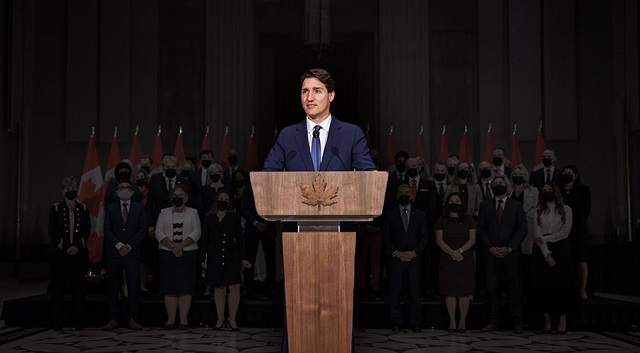
From the MacDonald Laurier Institute
By Aaron Wudrick and Jon Hartley
Liberals crack down on short-term rental owners in fiscal update — while ignoring the need for mass-scale construction of private builds
In Tuesday’s fiscal update, the Trudeau government found itself trying to bury the lede in a bad news story of bigger deficits, higher debt payments and a weakened economy.
Following a slew of opinion polls that show the Liberals trailing the opposition Conservatives by a widening margin, the update also exuded a palpable sense of urgency as the government scrambles to address a critical issue on which they were caught completely off guard: housing.
Housing has emerged, in recent months, as arguably the single biggest political concern in Canada. It impacts middle- and lower-income Canadians most severely and is a significant part of why the Liberals have been bleeding support amongst these key constituencies, which disproportionately include younger Canadians.
In response to their slide in the polls, the Liberals have belatedly started to act on the file — by removing the GST on new rental builds and dedicating $4 billion to a housing accelerator program that aims to incentivize municipalities to remove prohibitive zoning barriers. The fiscal update boasted that this fund has already signed agreements with nine cities to build 21,000 homes over the next three years, which sounds impressive until you consider that Canada needs approximately 3.5 million new homes by 2030 to fix the affordability crisis.
While any new housing supply will be welcome, the measures amount to knee-jerk reactions by a government that tries to solve problems by hastily showering them with money. While the Housing Accelerator Fund correctly focuses on scrapping restrictive zoning, the real goal should be to incentivize the construction of privately built housing on a mass scale, rather than simply subsidize additional public housing. The real cause of Canada’s housing shortage is not market failure but a series of policy failures on multiple fronts and levels.
Perhaps most alarming is the government’s assault on short-term rental housing by reducing tax deductions available to property owners, framed as a crusade against greedy landlords profiting from tourists while everyday Canadians scramble to keep a roof over their heads. The implicit assumption seems to be that, by making short-term rentals less attractive, these units will be magically transformed into long-term rental accommodations (which is wishful thinking, to say the least). In so doing, the government overlooks the diverse array of reasons Canadians choose to rent out properties on a short-term basis.
Flexibility — as facilitated by platforms like Airbnb — is essential for those who do not wish to commit to full-time landlord responsibilities. Additionally, Canadians may have family members who intermittently require housing, such as aging parents or university students. Long-term tenancy, burdened with compliance issues and eviction challenges, is unappealing to many property owners. If the government instead chose to make the work of a landlord more attractive, it wouldn’t need to make short-term rentals less appealing.
Even more troubling is the broader trend of the government encroaching on Canadians’ property rights, ostensibly to compensate for its own housing policy failures. Dictating how citizens use their own property raises serious concerns about the government overstepping its bounds. In a country with well-established property rights, it is inappropriate and misguided for the government to meddle in the choices of families seeking to make ends meet by renting out their properties.
On a practical level, the government’s chosen channels to tackle housing — relying on more government subsidies, undermining the short-term rental market, discouraging institutional investors from buying single-family homes and foreign buyer taxes or bans — will ultimately be too small to meaningfully grow the total stock of housing but will cause a number of harmful unintended consequences.
The bottom line is this: to make any kind of impact on housing affordability at scale, especially for individuals living below the median income, Canada needs a much larger housing supply — and the amount of capital investment this requires can only come from private developers.
All in all, the fiscal update shows the slapdash nature of the Trudeau government’s frantic attempts to address housing concerns, as well as its unfortunate inclination to resort to heavy-handed interventions, particularly in the realm of short-term rentals. The government’s indifference to infringing on private property rights underscores the need for a more supply-oriented approach to housing policy — one that works with, rather than against, the rights of property owners.
Aaron Wudrick is the domestic policy director at the Macdonald-Laurier Institute.
Jon Hartley is a senior fellow at the Macdonald-Laurier Institute and a research fellow at the Foundation for Research on Equal Opportunity.
Business
Carney’s European pivot could quietly reshape Canada’s sovereignty
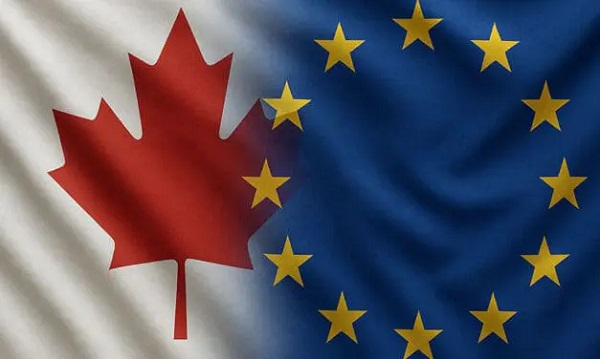
This article supplied by Troy Media.
Canadians must consider how closer EU ties could erode national control and economic sovereignty
As Prime Minister Mark Carney attempts to deepen Canada’s relationship with the European Union and other supranational institutions, Canadians should be asking a hard question: how much of our national independence are we prepared to give away? If you want a glimpse of what happens when a country loses control over its currency, trade and democratic accountability, you need only look to Bulgaria.
On June 8, 2025, thousands of Bulgarians took to the streets in front of the country’s National Bank. Their message was clear: they want to keep the lev and stop the forced adoption of the euro, scheduled for Jan. 1, 2026.
Bulgaria, a southeastern European country and EU member since 2007, is preparing to join the eurozone—a bloc of 20 countries that share the euro as a common currency. The move would bind Bulgaria to the economic decisions of the European Central Bank, replacing its national currency with one managed from Brussels and Frankfurt.
The protest movement is a vivid example of the tensions that arise when national identity collides with centralized policy-making. It was organized by Vazrazdane, a nationalist, eurosceptic political party that has gained support by opposing what it sees as the erosion of Bulgarian sovereignty through European integration. Similar demonstrations took place in cities across the country.
At the heart of the unrest is a call for democratic accountability. Vazrazdane leader Konstantin Kostadinov appealed directly to EU leaders, arguing that Bulgarians should not be forced into the eurozone without a public vote. He noted that in Italy, referendums on the euro were allowed with support from less than one per cent of citizens, while in Bulgaria, more than 10 per cent calling for a referendum have been ignored.
Protesters warned that abandoning the lev without a public vote would amount to a betrayal of democracy. “If there is no lev, there is no Bulgaria,” some chanted. For them, the lev is not just a currency: it is a symbol of national independence.
Their fears are not unfounded. Across the eurozone, several countries have experienced higher prices and reduced purchasing power after adopting the euro. The loss of domestic control over monetary policy has led to economic decisions being dictated from afar. Inflation, declining living standards and external dependency are real concerns.
Canada is not Bulgaria. But it is not immune to the same dynamics. Through trade agreements, regulatory convergence and global commitments, Canada has already surrendered meaningful control over its economy and borders. Canadians rarely debate these trade-offs publicly, and almost never vote on them directly.
Carney, a former central banker with deep ties to global finance, has made clear his intention to align more closely with the European Union on economic and security matters. While partnership is not inherently wrong, it must come with strong democratic oversight. Canadians should not allow fundamental shifts in sovereignty to be handed off quietly to international bodies or technocratic elites.
What’s happening in Bulgaria is not just about the euro—it’s about a people demanding the right to chart their own course. Canadians should take note. Sovereignty is not lost in one dramatic act. It erodes incrementally: through treaties we don’t read, agreements we don’t question, and decisions made without our consent.
If democracy and national control still matter to Canadians, they would do well to pay attention.
Isidoros Karderinis was born in Athens, Greece. He is a journalist, foreign press correspondent, economist, novelist and poet. He is accredited by the Greek Ministry of Foreign Affairs as a foreign press correspondent and has built a distinguished career in journalism and literature.
Troy Media empowers Canadian community news outlets by providing independent, insightful analysis and commentary. Our mission is to support local media in helping Canadians stay informed and engaged by delivering reliable content that strengthens community connections and deepens understanding across the country.
Business
EU investigates major pornographic site over failure to protect children

From LifeSiteNews
Pornhub has taken down 91% of its images and videos and a huge portion of the last 9% will be gone by June 30 because it never verified the age or consent of those in the videos.
Despite an aggressive PR operation to persuade lawmakers that they have reformed, Pornhub is having a very bad year.
On May 29, it was reported that the European Commission is investigating the pornography giant and three other sites for failing to verify the ages of users.
The investigation, which comes after a letter sent to the companies last June asking what measures they have taken to protect minors, is being carried out under the Digital Services Act. The DSA came into effect in November 2022 and directs platforms to ensure “appropriate and proportionate measures to ensure a high level of privacy, safety, and security of minors, on their service” and implement “targeted measures to protect the rights of the child, including age verification and parental control tools, tools aimed at helping minors signal abuse or obtain support, as appropriate.”
According to France24: “The commission, the EU’s tech regulator, accused the platforms of not having ‘appropriate; age verification tools to prevent children from being exposed to pornography. An AFP correspondent only had to click a button on Tuesday stating they were older than 18 without any further checks to gain access to each of the four platforms.”
Indeed, Pornhub’s alleged safety mechanisms are a sick joke, and Pornhub executives have often revealed the real reason behind their opposition to safeguards: It limits their traffic.
Meanwhile, Pornhub — and other sites owned by parent company Aylo — are blocking their content in France in response to a new age verification law that came into effect on June 7. Solomon Friedman, Aylo’s point man in the Pornhub propaganda war, stated that the French law was “potentially privacy infringing” and “dangerous,” earning a scathing rebuke from France’s deputy minister for digital technology Clara Chappaz.
“We’re not stigmatizing adults who want to consume this content, but we mustn’t do so at the expense of protecting our children,” she said, adding later, “Lying when one does not want to comply with the law and holding others hostage is unacceptable. If Aylo would rather leave France than apply our law, they are free to do so.” According to the French media regulator Arcom, 2.3 million French minors visit pornographic sites every month.
Incidentally, anti-Pornhub activist Laila Mickelwait reported another major breakthrough on June 7. “P*rnhub is deleting much of what’s left of the of the site by June 30,” she wrote on X. “Together we have collectively forced this sex trafficking and rape crime scene to take down 91% of the entire site, totaling 50+ million videos and images. Now a significant portion of the remaining 9% will be GONE this month in what will be the second biggest takedown of P*rnhub content since December 2020.”
“The reason for the mass deletion is that they never verified the age or consent of the individuals depicted in the images and videos, and therefore the site is still awash with real sexual crime,” she added. “Since the fight began in 2020, 91% of P*rnhub has been taken down — over 50 million images and videos. Now a huge portion of the last 9% will be gone by June 30 because P*rnhub never verified the age or consent of those in the videos and the site is a crime scene.”
Mickelwait has long called for the shutdown of Pornhub and the prosecution of those involved in its operation. This second mass deletion of content, as welcome as it is, reeks of a desperate attempt to eliminate the evidence of Pornhub’s crimes.
-

 Crime2 days ago
Crime2 days agoHow Chinese State-Linked Networks Replaced the Medellín Model with Global Logistics and Political Protection
-

 Addictions2 days ago
Addictions2 days agoNew RCMP program steering opioid addicted towards treatment and recovery
-

 Aristotle Foundation2 days ago
Aristotle Foundation2 days agoWe need an immigration policy that will serve all Canadians
-
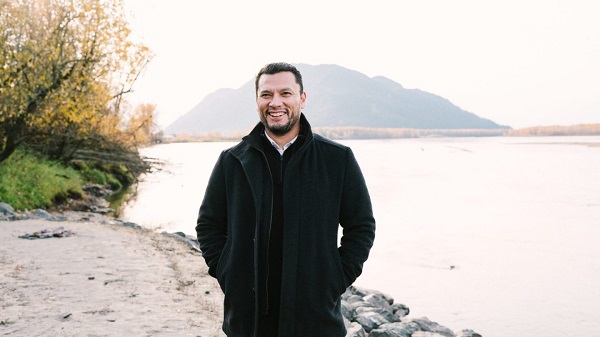
 Business2 days ago
Business2 days agoNatural gas pipeline ownership spreads across 36 First Nations in B.C.
-

 Business19 hours ago
Business19 hours agoEU investigates major pornographic site over failure to protect children
-
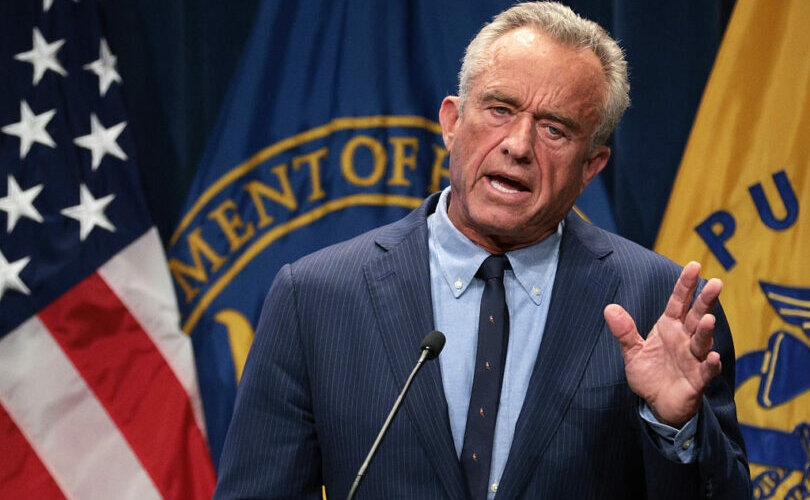
 Courageous Discourse2 days ago
Courageous Discourse2 days agoHealthcare Blockbuster – RFK Jr removes all 17 members of CDC Vaccine Advisory Panel!
-
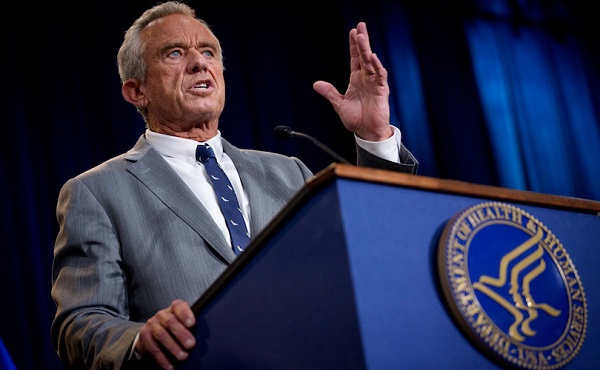
 Health1 day ago
Health1 day agoRFK Jr. purges CDC vaccine panel, citing decades of ‘skewed science’
-

 Crime2 days ago
Crime2 days agoLetter Shows Biden Administration Privately Warned B.C. on Fentanyl Threat Years Before Patel’s Public Bombshells



